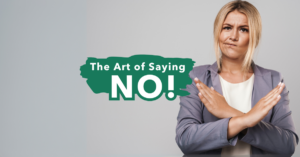Turbulence creates an enormous amount of energy. Just think of the force of the tornado or water in rapids or the flow of air that enables a 90,000 pound vehicle to overcome gravity. Turbulence, by its nature, demands our attention. Its power is fierce and at times unrelenting. And it also creates a vacuum – as the past is sucked away and the future is yet to be.
For those of us that have the desire, the courage and the will we can use turbulent times to build (or rebuild) better futures. For ourselves, for our families, for our workplaces, or for our communities. This is the challenge and also the reward of turbulent times.
Here are five simple, yet provocative questions that foster the process of creating something new, something better, something transformative during a major disruption. These are questions that will help make sense of the world around you and to begin to give shape to the new way of being that you want to step into.
The questions are, on the surface, quite simple:
- What is known now that could not seen before?
- What will be left behind?
- What will be carried forward?
- What do is the biggest and brightest vision for the future?
- What is the next step?
Let’s Look at Each Question
What is known now that could not seen before?
By its nature, turbulence tosses us into unknown territory. We are no longer able to stay in our comfort zone, no matter how much we want to. Things are different and present a sharp contrast to the recent past. Certainly there are new things emerging. Yet turbulence also brings to light things that were always there but were either hidden or ignored. For example, you might be able to ignore a poorly performing product in good times, as there were enough sales to eek by. Enter an economic downturn and it becomes painfully obvious that something must be done.
In turbulent times we need to avoid hiding our eyes, laying low or failing to explore what is changing. This is a time for observing, ourselves and others. It is a time for rapid learning, for discerning what is emerging and what is diminishing. It is a time for curiosity, for exploration, and for asking tough questions.
Those with keen eyes and the stomach for exploring what is happening and beginning to anticipate what is likely to happen, can be clear eyed about the situation. They can move through the turbulence with more ease (notice I did not say easily, but with MORE ease and less angst).
Learning about ourselves and the world around us is the hidden gem in turbulence. You may find you are stronger and more resilient than you ever imagined. You may discover that your team, when faced with a challenge, can truly come together and deliver. It may be that your organization finally has no choice to but to face up to the fact that certain processes are irrevocably broken.
What will be left behind?
This, my friend, is the most neglected question of the five. And perhaps the one that has the greatest ability to enable us to move forward lighter, more focused and less overwhelmed. In our western world we have a tendency to be additive, not subtractive. We add another product or service, but never retire the old one. We take on a side hustle, but never question what in our lives can be eliminated. We reduce our workforce and instead of shedding or simplifying the work, merely spread the existing work over fewer people.
What you choose to leave behind can be physical. Perhaps now you’ve realized that working virtually really can work and you can leave behind that 45-minute commute every day. Or perhaps that expensive real estate you lease is no longer needed.
You can also choose to leave behind goods, services, tasks and processes. Is there a product that is no longer viable? Are there internal processes that can be eliminated or automated? Are the customers that should be shed? And you may have found in this challenging time what truly is most important to you, enabling you to leave behind the activities that distracted you from that in the past.
There also may be some beliefs or worldviews you choose to leave behind. Perhaps it is your self-doubts about your ability to deal with a challenge. Or your belief that virtual word wouldn’t work in your office. Or that your bureaucratic and cumbersome decision-making structure needs to be flattened and streamlined.
Just examples – but a question worth wrestling with and going beyond the superficial. Sacred cows and long held beliefs are difficult to dismantle, but now is the perfect time to challenge them and to act with intention to leave some things in the past.
What will be carried forward?
As the word transformation implies, this is a metamorphosis and not a “burn it to the ground” exercise. Typically in challenging times we find, in stark relief to the turbulence around us, what was valued and working in our past ways. We see the team members that truly add value. We rejoice in the loved ones around us that are so very important. We notice what is working when so much around us is not working well.
Be intentional about knowing what serves you, your team and your organization well. Ask the question. Notice. Make a list. Consider what it will take to pull it forward, for often what was helpful in the turbulence can get lost if not carefully tended.
For example, I’ve really appreciated not being overscheduled during the Coronavirus pandemic. I’ve enjoyed having evenings and weekends free, giving me the time to relax, to read and be with family. As things begin to open, I’ll be intentional to create mechanisms that both preserve this type of time and prevent me from overscheduling.
So with this question, go beyond just asking what in your current state you want to pull forward. Put in place some systems that ensure you do.
What do is my(our) biggest and brightest vision for the future?
As counterintuitive as it may sound, the time when things appear the most broken are the times to envision what might be. The world around you has crumbled and it will be up to you to recreate it.
Things will gel into a new order, a new pattern, a different way of being. This is your opportunity to shape what form your future takes. Notice that I said shape. You can’t will it into being. You can’t force the new form. But you can define what you would like to the emerging state to be and exert a great amount of influence.
In this step, suspend disbelief. Try, to the best of your abilities, to describe what your new future looks like. What are you doing? How are you spending your time? How does your team function? What does your organization look like and function?
Here is a hack for this step: Imagine it is a year from now. Write, in the present tense, what your world is like. Be descriptive. Write it like a story. What are you doing? Feeling? Accomplishing? This story can be a personal story, a family story, a team story and an organizational story. They all follow the universal principle that envisioning something you want to create is the initial inspiration to begin to make it real.
What is my(our) next step?
Visions, plans and dreams are important, as without them we wonder aimlessly. But without action, they are merely daydreams. Making them a reality involves action. But here is the good news. They don’t require a detailed 1000-line project plan. They don’t require a 5-year strategic plan. They don’t require you to know every step along the way.
All they require is movement. Taking a step that is directionally correct. And then another and another and another. Step by step. Toward that vision. Asking on a regular basis what you are learning (questions #1). Identifying what is holding you back that can be jettisoned (question #2). Ensuring what is working sticks with you (question #3). Revisiting and revising the vision (question #4). And then taking action. Over and over and over again.
Believe me, this process works any time. But is can work on an accelerated pace in turbulent time. Because the status quo is no longer. Because we need to recreate ourselves anyway – so why not in a way that moves us forward into a future we desire. Because when things are broken wide open, a space appears to imagine and build something new. Something bigger. Something better.
This series of questions works for individuals. It works for teams. It works for organizations. And it can work for communities or nations as well. Without doubt, the process to wrestle with the questions and to formulate answers gets messier the more people involved. But messy does not equate to impossible not does it imply not worth doing. In fact, it is the most treasured outcome from turbulent times.
If you’d like some support, either individually or as a team, to work through this process, let’s talk. I’m glad to talk you through the process of using turbulent times to your best advantage – and to explore if there are ways Evergreen Leadership can help. Email me at kris@evergreelnedership.com or schedule a time here.




